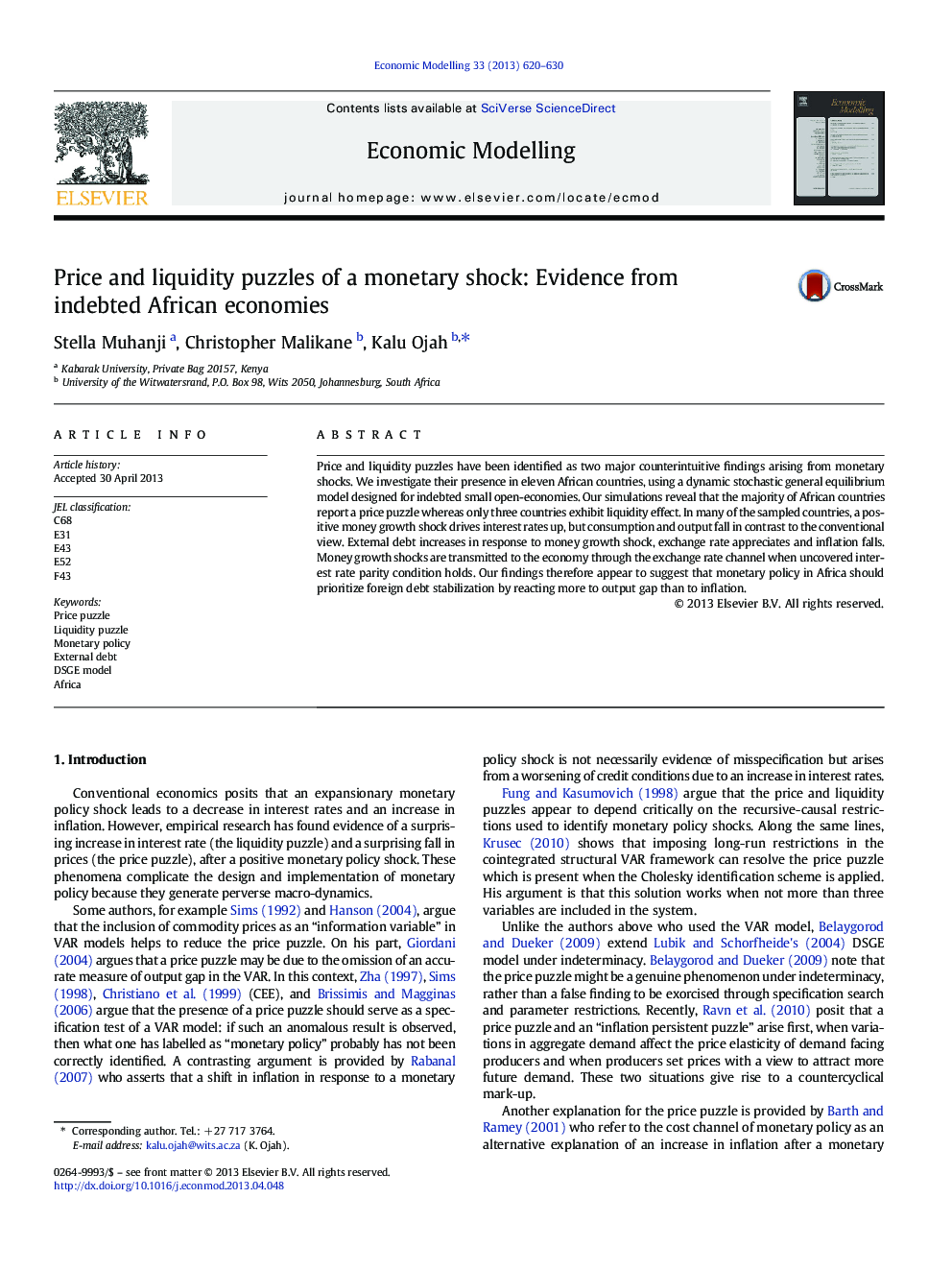| Article ID | Journal | Published Year | Pages | File Type |
|---|---|---|---|---|
| 5054491 | Economic Modelling | 2013 | 11 Pages |
Abstract
Price and liquidity puzzles have been identified as two major counterintuitive findings arising from monetary shocks. We investigate their presence in eleven African countries, using a dynamic stochastic general equilibrium model designed for indebted small open-economies. Our simulations reveal that the majority of African countries report a price puzzle whereas only three countries exhibit liquidity effect. In many of the sampled countries, a positive money growth shock drives interest rates up, but consumption and output fall in contrast to the conventional view. External debt increases in response to money growth shock, exchange rate appreciates and inflation falls. Money growth shocks are transmitted to the economy through the exchange rate channel when uncovered interest rate parity condition holds. Our findings therefore appear to suggest that monetary policy in Africa should prioritize foreign debt stabilization by reacting more to output gap than to inflation.
Related Topics
Social Sciences and Humanities
Economics, Econometrics and Finance
Economics and Econometrics
Authors
Stella Muhanji, Christopher Malikane, Kalu Ojah,
